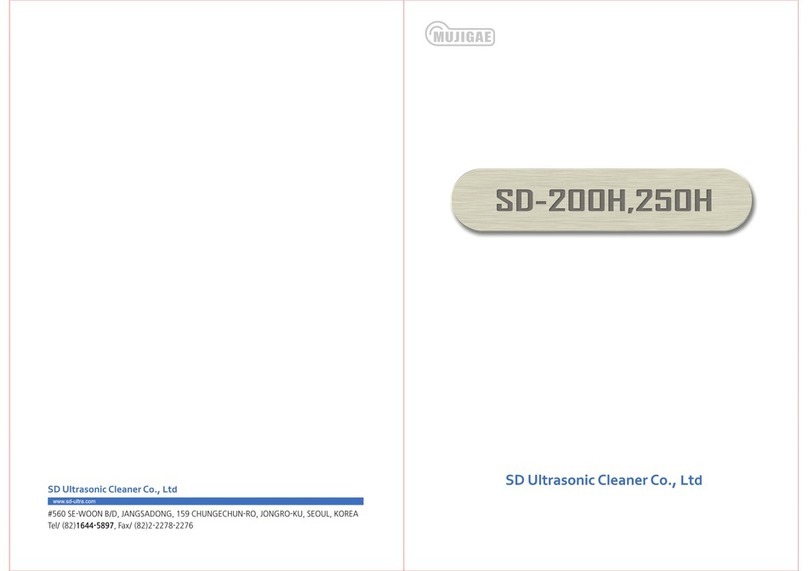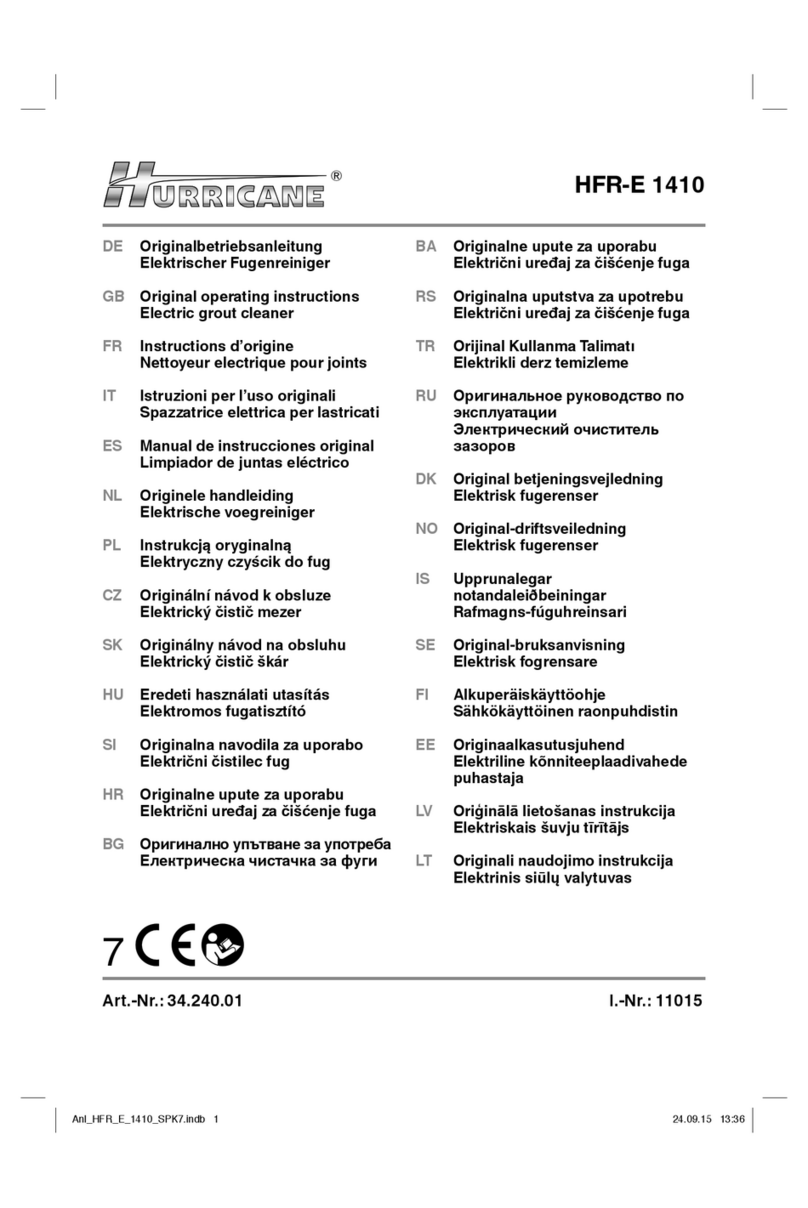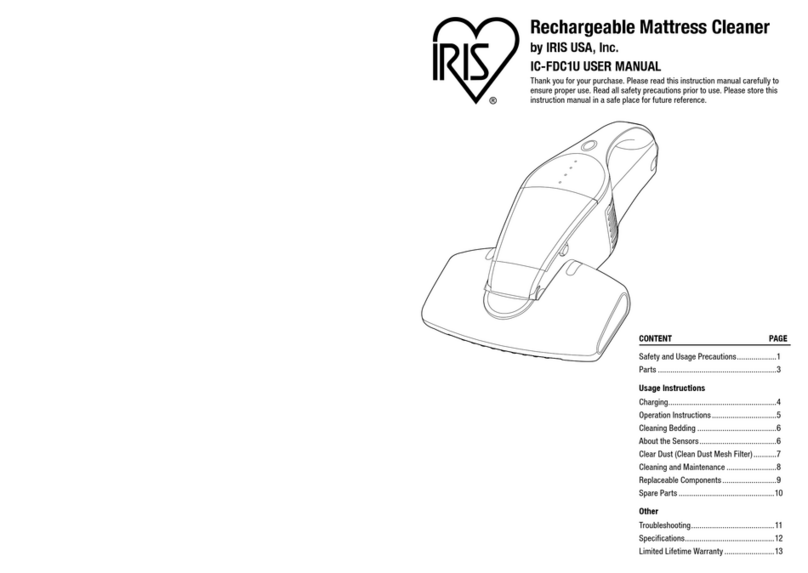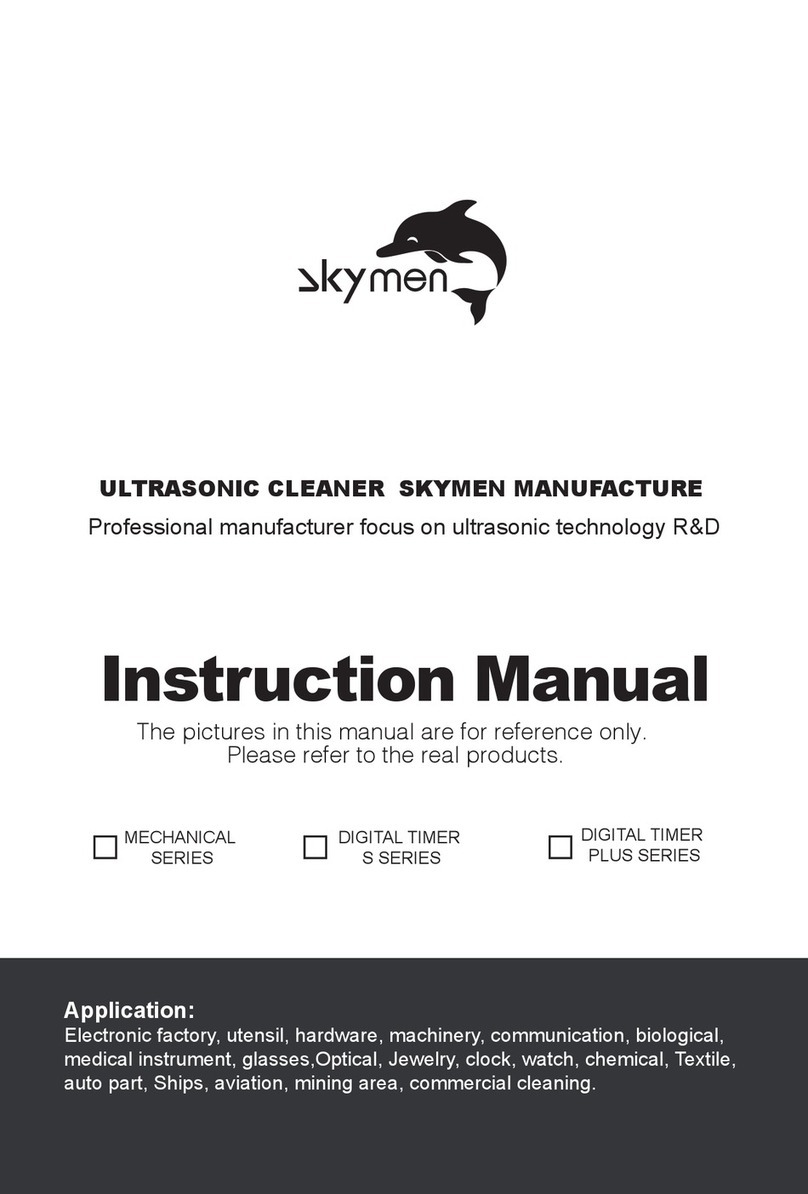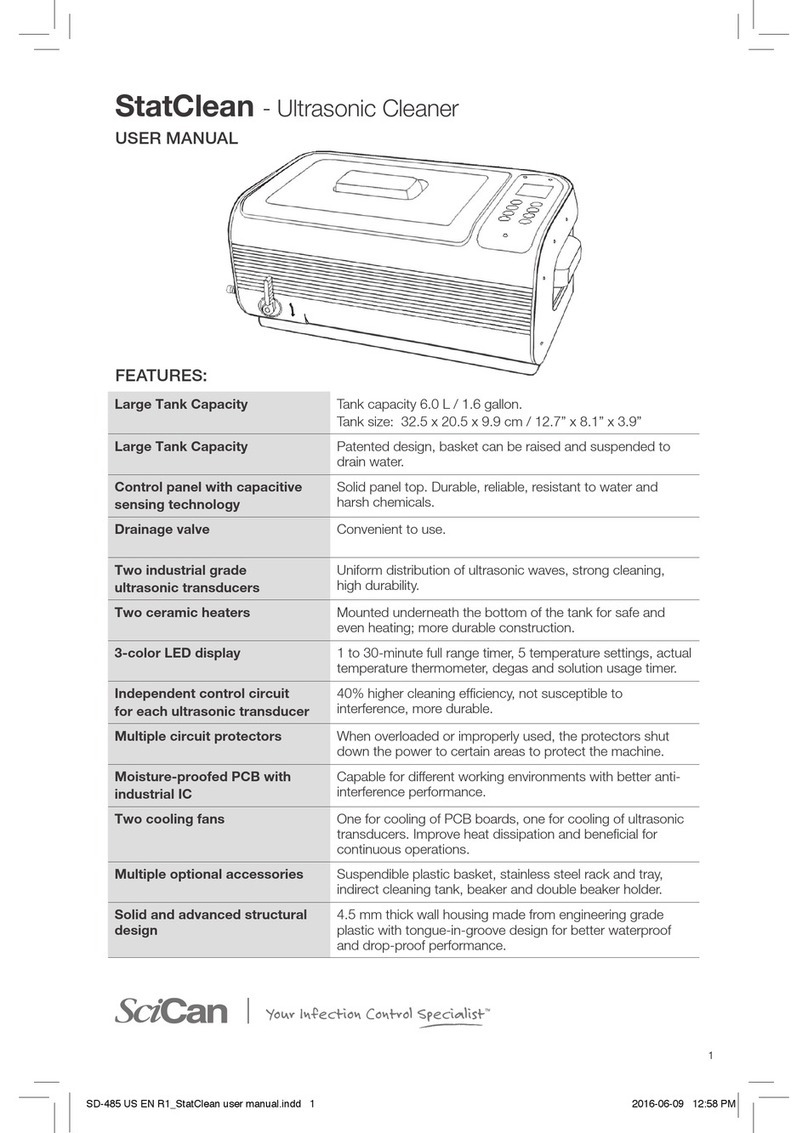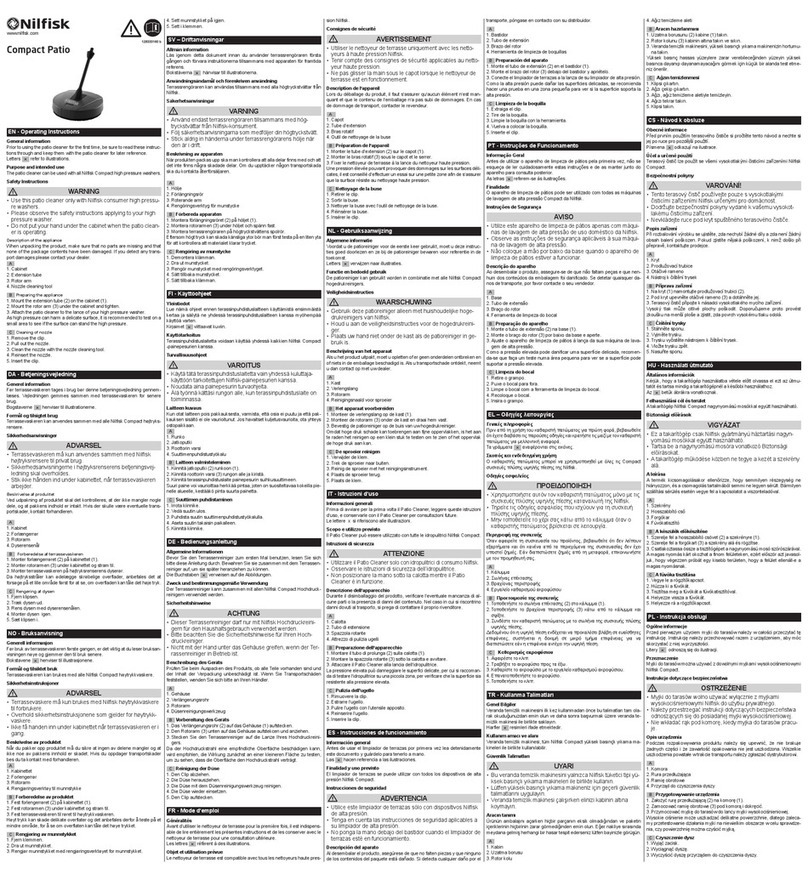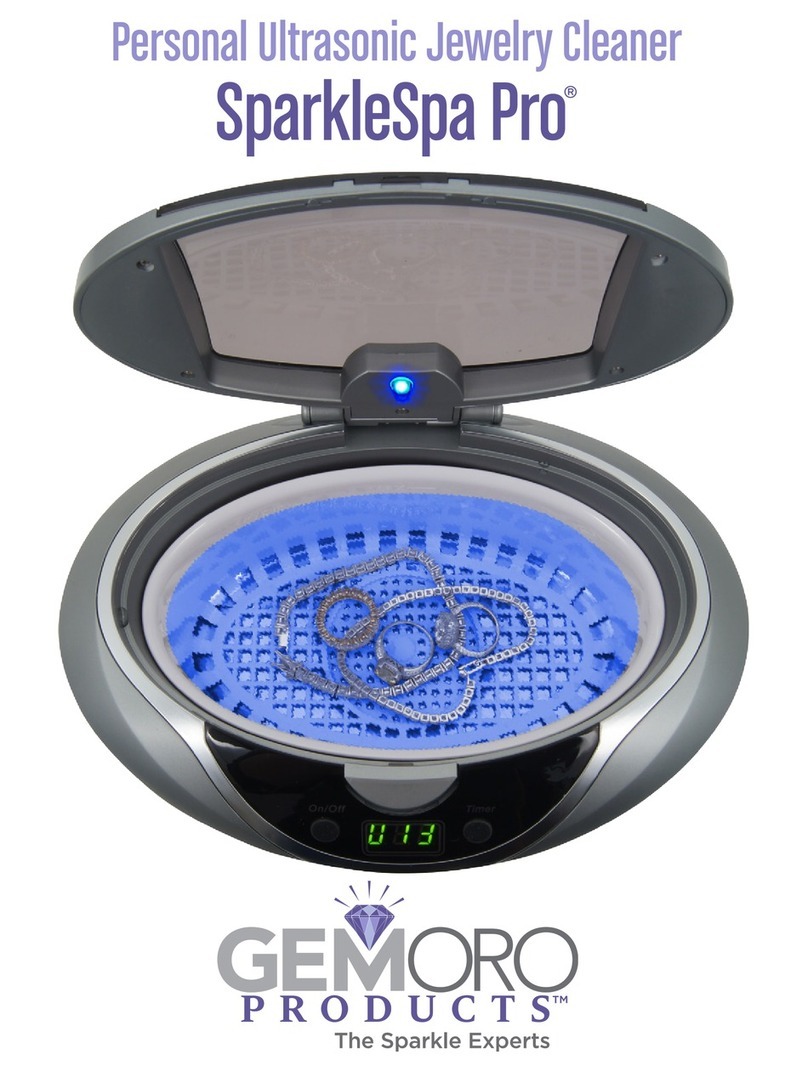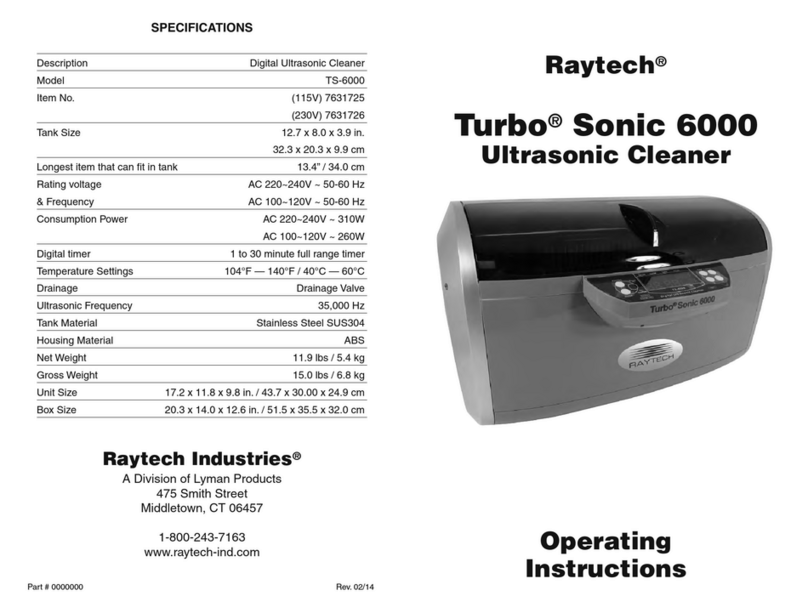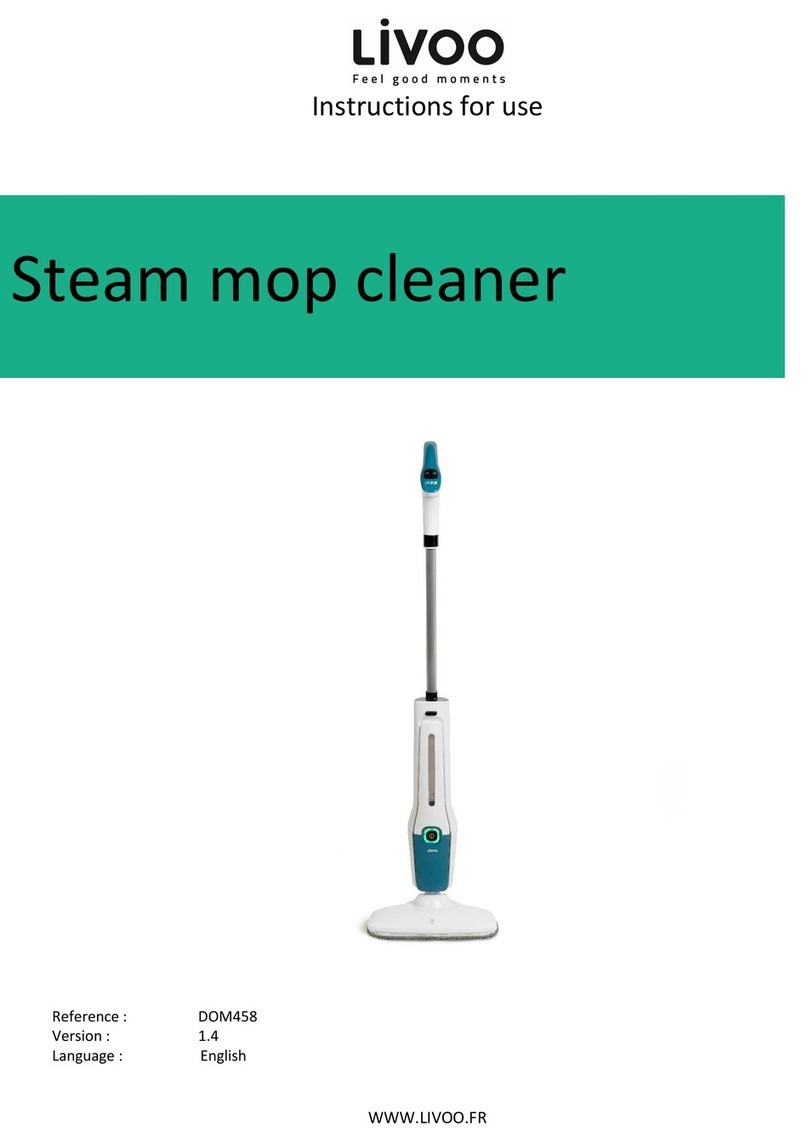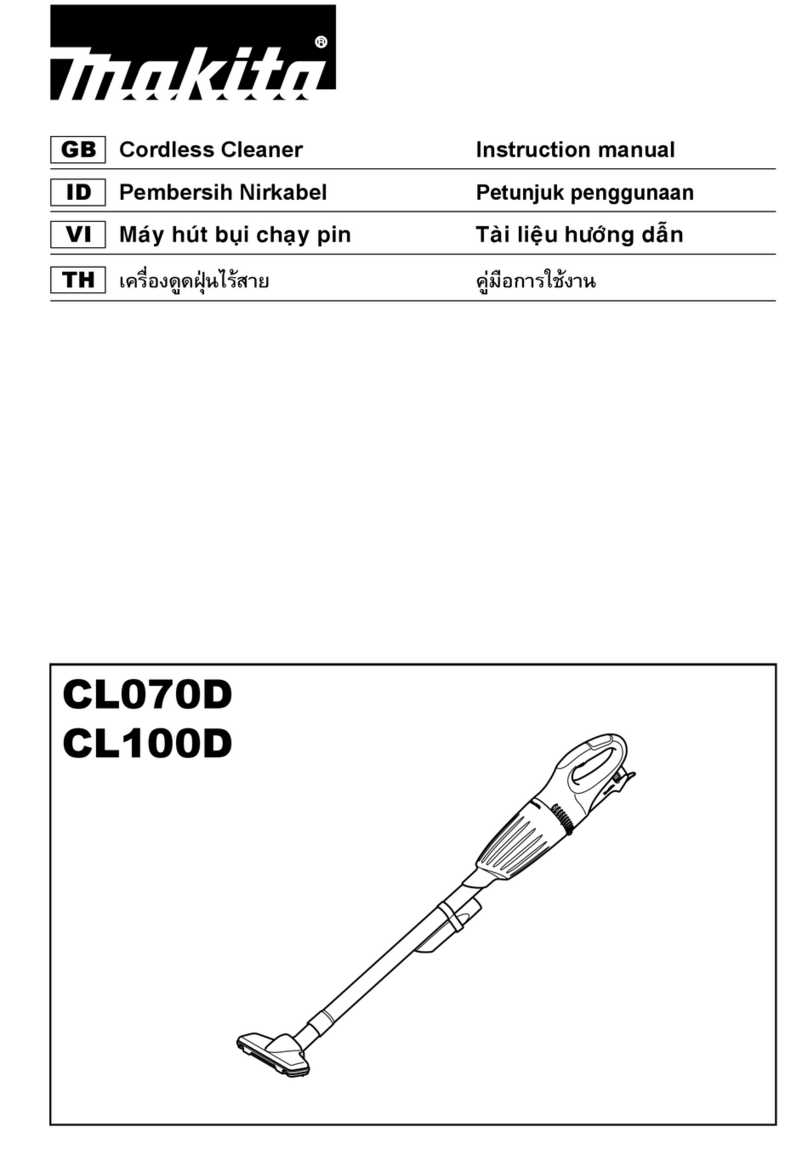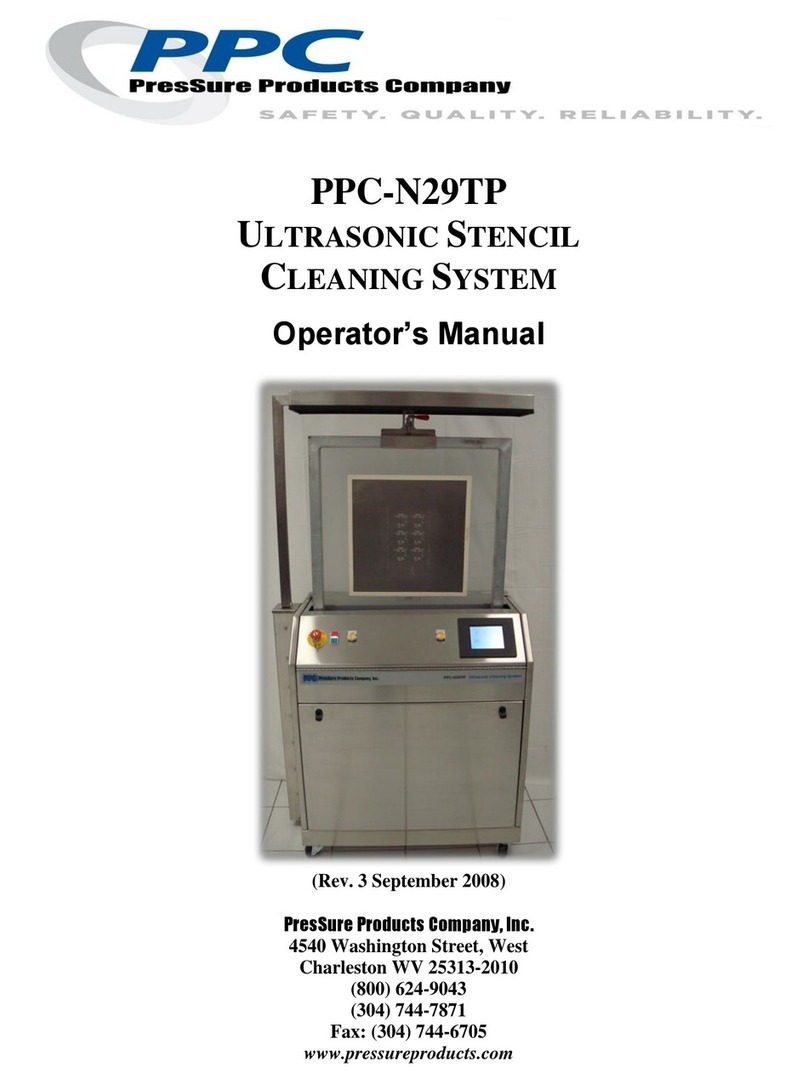Cleanco Compact 45 User manual

VERSION AUG 2017

1
TABLE OF CONTENTS
OPERATIONS
Table of Contents 1
Machine Data Log 2
Safety Instructions 3
Technical Specifications 5
General Information 6
- Local Water Conditions
- Waste Water Disposal
- Cleaning Solutions & Cleaning
- Cleaning Wand Procedure
Operating Instructions 7
- Start up
- Shut down
De-flooding 8
Freeze Guard Procedure 8
Water Flow System 8
High Pressure Pump 8
Vacuum System 9
Electrical System 9
Heat Exchangers 9
PTO System 9
Front Instrument Panel 9
Recovery Tank 9
Maintenance 10
- Daily
- Weekly
- Monthly
- Quarterly
- Bi-Annual
- Coil Flush
Troubleshooting 11
Water Pumping & Heat Transfer System15
- Optional PTI
- PTI Maintenance
- PTI Operating System
- Jet Sizing
Chemical Injection System 19
Vacuum System 20
Vacuum Pump 21
- Water Pump
- Vacuum Inlet Filter
- Vacuum Relief Valve
- Drive Belts
- Pressure Regulator
- Hoses
- Optional Waste Pump-out
Engine Coolant Replacement 23
- Water Pump Drive Belt
- Waste Tank Lint Basket
- Waste Tank Float Valve
- Inline Water Filter
Troubleshooting 24
DRAWING & PARTS LIST
Front Panels 12
Water Pumping & Heat Transfer System17
- With PTI Option 18
Chemical Injection System 19
Vacuum System 20
Overhead View - Dual Heat Exchanger 27
Front Panel –Front View 29
Front Panel –Back View 30
Front Panel –Plumbing Assembly 32
Pressure Regulator 35
Recovery Tank 36
BasePlate 38
Pump Kits 43
Installation Kit 44
Dual Heat Exchanger 48
P.T.I. 50
Cover & Holder Kit 52
PTO Shaft 54
CAD Panel Mount Option 56
CAD External Option 57
Horizontal F/W Tank 60
Aqua Storage F/W Tank 62
Aqua Reel Tank 66
Wand 2 Jet 70
Wand Single Jet 71
Stair Tool 30” Swivel 72
Stair Tool 40” 73
Upholstery Tool 3” 74
Wand 1 ¾” S-Bend 4 Jet 75
Stair Tool 36” S-Bend 76
WIRING
Wiring Diagrams 77
WARRANTY
5 Year Extend-A-Care Warranty 80

2
MACHINE DATA LOG/OVERVIEW
MODEL
DATE OF PURCHASE
SERIAL NUMBER
COMPANY NAME
YOUR DEALER
NAME:
ADDRESS:
PHONE NUMBER:
Welcome…and congratulations on the purchase of your Cleanco Truckmount. This instruction
manual is a guide for operating and servicing your unit. Read this manual completely before
installing or operating this unit. This unit offers you personal convenience. All of your
instrumentation and controls have been positioned to give you easy access for operation and
daily maintenance.
Proper operation and service are essential to the efficient functioning of this unit. When
maintained correctly, this unit will have a long, trouble-free life.
The service methods described in this manual are explained in such a manner that servicing
may be performed accurately and safely. Proper service varies with the choice of procedure,
the skill of the mechanic, and the tools or parts available. Before attempting any repair, make
certain that you are thoroughly familiar with this equipment and are equipped with the proper
tools. Any questions pertaining to operating or servicing this unit should be directed to your
nearest dealer.
THIS UNIT MUST BE INSTALLED BY THE DEALER FROM WHOM YOU PURCHASED IT
IN ACCORDANCE WITH THE PRESCRIBED INSTALLATION PROCEDURES.
MAKE CERTAIN THAT THE WARRANTY FORM IS FILLED OUT AT THE TIME OF
INSTALLATION AND IS RETURNED TO YOUR DEALER.
ESTEAM MANUFACTURING LTD
3750 19TH ST. N.E
CALGARY, ALBERTA, CANADA T2E 6V2
Information in this document is subject to change without notice and does not represent a commitment
on the part of Esteam Manufacturing Ltd.

3
IMPORTANT SAFETY INSTRUCTIONS
When using this machine, basic precautions must always be followed, including the following:
READ ALL INSTRUCTIONS BEFORE USING THIS MACHINE
These symbols mean WARNING or CAUTION. Failure to follow warnings and cautions
could result in fatality, personal injury to yourself and/or others, or property damage.
Follow these instructions carefully!
Read the operator’s manual before installing or starting this unit. Failure to adhere to instructions
could result in severe personal injury or could be fatal.
Operate this unit and equipment only in a well-ventilated area. Exhaust fumes contain carbon
monoxide which is an odorless and deadly poison that can cause severe injury or fatality. DO NOT run this
unit in an enclosed area. DO NOT operates this unit where the exhaust may enter any building doorway,
window, vent, or opening of any type.
DO NOT store any type of flammable material in the vehicle.
DO NOT operate engine if gasoline is spilled. Avoid creating any ignition until the gasoline has been
cleaned up. Never use gasoline as a cleaning agent.
DO NOT place hands, feet, hair, or clothing near rotating or moving parts. Avoid any contact with
moving parts! Rotating machinery can cause injury or fatality.
Never operate this unit without belt guards or hoods. The high speed moving parts, such as belts and
pulleys, should be avoided while this unit is running. Severe injury, damage or fatality may result.
DO NOT service this unit while it is running. The high-speed mechanical parts as well as high
temperature components may result in severe injury or severed limbs.
Never touch electrical wires or components while the engine is running. They can be sources of
electrical shock.
Before servicing this unit, allow it to “cool down.” This will prevent burns from occurring.
Water under high pressure at high temperature can cause burns, severe personal injury or fatality.
Shut down machine, allow to cool down, and relieve system of all pressure before removing valves,
caps, plugs, fittings, filters, and bolts.
Always wear hearing protection when unit is running. Always comply with local noise ordinance
when operating units.

4
Dangerous Acid, Explosive Gases! Batteries contain sulfuric acid. To prevent acid burns, avoid contact
with skin, eyes and clothing. Batteries produce explosive hydrogen gas while being charged. To prevent
a fire or explosion, charge batteries only in well ventilated areas. Keep sparks, open flames, and other
sources of ignition away from the battery at all times. Keep batteries out of the reach of children. Remove
all jewelry when servicing batteries.
Before disconnecting the negative (-) ground cable, make sure all switches are OFF. If ON, a spark will
occur at the ground cable terminal which could cause an explosion if hydrogen gas or gasoline vapors are
present. When disconnecting the battery, ALWAYS disconnect the negative (-) terminal FIRST.
DO NOT smoke around the unit. Gas fumes may accumulate and be ignited. The battery is also
extremely flammable. This will prevent possible explosions.
DO NOT damage the vehicle in any manner during installation. When routing fuel lines DO NOT
place the hose in any location where damage may occur to the hose or vehicle. Avoid any contact with
moving parts, areas of high temperature, brake lines, fuel lines, muffler, catalytic converter, or sharp
objects.
DO NOT exceed your vehicle’s weight limit. The console with waste tank and accessories weighs
approximately 800 lbs. Make certain to account for any additional accessories in your weight and balance
calculations. Make certain that the vehicle has the correct axle rating. This will prevent unsafe vehicle
driving conditions.
We require high-back seats on all vehicles in which units are to be installed for head and neck
protection. We recommend using a metal partition between the seats and equipment.
DO NOT operate this unit without the water supply attachment turned on. The water pump and other
vital components may be seriously damaged if this unit is permitted to operate dry without water.
DO NOT operate this unit without the filter installed in the waste tank.
Keep your vehicle work area clean. Wands, stair tools, and other accessories must be securely
fastened before driving the vehicle.
All high pressure hoses must be rated for 3000 PSI at 2500F. Thermoplastic hoses do not meet these
specifications and should not be used. Severe burns and injury may result if the hoses do not meet these
requirements.
Make certain that you receive complete training by the distributor from whom you purchased this
unit.
This unit uses high pressure and temperature. Improper or irresponsible use may result in serious
injury.
Do not modify this unit in any manner. Improper modification can cause severe personal injury or
fatality.

5
TECHNICAL SPECIFICATIONS
ITEM
DIMENSION/CAPACITY
Engine speed
1450 rpm (high speed) Water Pump ON
Water pump rpm
850 rpm
Vacuum pump rpm
2850 rpm
Water flow rate
4 GPM (maximum)
Water pump pressure
1200 PSI (maximum)
Vacuum relief valve
14" Hg/45 - 12” Hg/47
Waste tank capacity
100 gallons (optional 120 gallon)
Console weight (with waste tank)
500 lbs.
Pump Belt size
AX42
Blower Belt size
AX45
JET SIZING:
Recommended floor tool tip sizing should not exceed a total of “.045”. Using larger jet sizes on your
cleaning unit may reduce cleaning temperatures.
Example: Dual-jet wand uses two 11001.5 jets (110 deg spray angle w/ 01.5 orifice).
015 x 2 = 03
Three-jet wand uses three 11001 jets (110 deg spray w/1.0 orfice).
Quad-jet wand uses four 9501 jets (95 deg spray angle w/ 1.0 orifice)
01 x 4 = 04
Upholstery tool jet size: 80015
Stair tool jet size: 9502 or two 9501.5

6
GENERAL INFORMATION
The Cleanco Compact Truckmount has been designed
for the professional cleaner who demands a high
performance cleaning unit. Dependable performance is
the guiding principal in the design and construction of
the Cleanco Compact. Although the Cleanco Compacts
are designed with simplicity in mind, this truckmounted
carpet cleaning plant has many functions that perform
simultaneously.
Engine has to run at a continuous RPM. (Van
Engine 1450 RPM)
High Pressure water pump provides steady pressure
at the proper flow for cleaning.
Vacuum Blower has to pull air and soiled water back
from the site.
Cleaning solution has to be injected into the water
flow at the right concentration.
Heating system must deliver and maintain proper
heat.
The vacuum recovery tank stores soiled water for
proper disposal.
This manual contains operation instructions as well as
information required for proper maintenance,
adjustments, and repair of this unit. To assist with proper
diagnosis of a problem, a general troubleshooting has
been included for your convenience.
LOCAL WATER CONDITIONS
The quality of water varies greatly throughout North
America. This can influence the reliability and efficiency
of your equipment. Many areas have an excess of
minerals in the water, which results in what is known as
hard water. These minerals tend to adhere to the inside
of heat exchangers and other parts of the machines
causing damage and loss of cleaning effectiveness.
Cleaning effectiveness and equipment life is increased
when water softeners are used in hard water areas. The
low cost of water softeners is more than made up for by
the increased life of machine parts and cleaning
efficiency.
WASTE WATER DISPOSAL
There are laws throughout North America that prohibit
the dumping of soiled water from carpet cleaning
equipment in any place but a sanitary treatment system.
The water recovered into your unit’s recovery tank
contains materials such as detergent residue and many
different soil contaminants removed from the carpet you
have cleaned. These materials must be processed
before they are safe to re-enter our streams, rivers and
reservoirs.
AS PER FEDERAL, STATE AND LOCAL LAWS, DO
NOT DISPOSE OF WASTE WATER INTO STORM
DRAINS, GUTTERS, STREAMS, RESERVOIRS, ETC.
CLEANING SOLUTIONS & CLEANING
Your Cleanco Compact has been designed with the
latest technology to produce the highest quality cleaning
results possible. However it is only one of many tools of
the carpet cleaning trade, and can produce only as good
as the person operating it. There are no short cuts to
quality. It takes time, cleaning knowledge, and the
proper use of quality cleaning solutions.
Cleanco recommends Esteam Cleaning Systems brand
name for use in your Cleanco Compact. Also be sure to
follow directions of all cleaning solutions, to obtain
quality results and for safety. The improper use of
cleaning solutions in your Cleanco Compact can cause
serious damage to the plumbing system, high-pressure
pump, and heat exchangers. (Cleanco does not
recommend running products through your unit such as
solvents, or grease removers with a high concentration
of solvents).
Cleanco endorses the IICRC Standards for Carpet
Cleaning, which outlines proper cleaning procedures for
all types of carpet and all kinds of cleaning systems. We
encourage Cleanco owners to acquire a copy of these
standards from your distributor and make yourself
familiar with them. In brief, the standards specify that all
carpet must be dry vacuumed, preconditioned, rinsed,
and dried, in order to be properly cleaned.
CLEANING WAND PROCEDURE
To have a quality cleaning result, correct wand
movement is of the utmost importance. Failure to take
time and extra care can result in an unhappy client.
Always move the cleaning wand in a smooth forward
and backward motion. Apply slight pressure on the
forward stroke while injecting cleaning solution onto the
carpet. Then on the backstroke towards yourself again
apply slight pressure on the wand and inject and vacuum
cleaning solution. Continue this method over-lapping
each forward and backstroke, for about a three to four
foot square area. Once the three square foot area has
been completed, return back over the same area-
utilizing vacuum only. Moving across then clean and
vacuum the next three to four square feet and again

7
repeating the extra vacuum pass. A good rule to
remember is for every one wet pass, two dry (vacuum)
passes are required. Failure to adopt good wanding
procedures can result in streaking, over wetting,
browning and longer drying times.
Over wetting not only leaves a bad impression with your
client but may also require an extra trip back to correct
annoying problems such as browning. There are several
things that could cause over wetting:
1. Not enough vacuum strokes, or incorrect wanding
procedures.
2. Clogged vacuum blower filter.
3. Clogged lint basket filter.
4. Vacuum tank not sealed properly.
5. Obstruction in the vacuum hose, or kink in the
vacuum hose.
6. Vacuum tank drain valve partially open.
7. Cleaning a heavily foam-saturated carpet without
defoamer.
OPERATING INSTRUCTIONS
NOTE: Before operating the unit, make sure you are in a
well-ventilated area. Exhaust fumes from the vehicle
contain carbon monoxide and are hazardous to your
health and your client’s health. Do not operate the unit or
the vehicle near any building doorways, windows, or
openings of any kind.
1. Check your fuel gauge to ensure you have enough
fuel for the job.
2. Check to make sure you have an adequate amount
of fresh water in your fresh water tank to complete
the entire job. If not, fill fresh water tank prior to
starting the job.
3. Check your chemical jug to ensure that you have
enough concentrated solution for the required job. If
not, mix and fill the chemical jug with the desired
cleaning solution.
4. Connect all hoses required. When connecting
hoses start from the furthest point to be cleaned
and work back towards the unit. This will ensure
that you have the proper length required. Once at
the Cleanco unit, connect the high-pressure hose to
the quick discount on the front panel. Then repeat
the same process with the vacuum hose and
connect it to the vacuum port on top of the recovery
tank.
START UP
1. Make sure the van is in the park position and the
emergency brake is set.
2. With the van engine running, turn the main power
switch to UPHOLSTERY or CARPET MODE
depending on the work you are about to do.
3. Connect the fill (primer) hose to the second high
pressure quick connect on the instrument panel, and
place the open end in the second vacuum port.
4. Turn on the high pressure pump switch to the “ON”
position. (Water will start to flow through the fill
(primer) hose into the recovery tank.)
5. Adjust the chemical metering system by turning the
chemical metering knob counter clock wise until the
float ball in the chemical meter sits at 2 or 3 GPH.
6. Turn the pump switch to the “OFF” position and
disconnect the fill (primer) hose.
7. Turn the pump switch to the “ON” position and check
the pressure setting on the high pressure gauge.
Standard carpet cleaning pressures should be
between 300 and 500 psi. Upholstery pressures
should be between 100 and 200 psi.
8. Connect the vacuum and the male end of the
pressure hose to the carpet wand or tool being used.
9. You are now ready to start cleaning.
NOTE: The machine will automatically shut down when
it reaches full capacity due to the high level float switch
located inside the recovery tank. When this occurs,
empty the recovery tank at an approved disposal site. To
save time on emptying recovery tanks Cleanco
recommends that you have a Cleanco C.A.D. (Cleanco
Auto Drain) installed on your recovery tank.
SHUT DOWN
1. Lay vacuum hoses out in order for all moisture to be
removed from hoses. This prevents spillage of any
soiled water in your vehicle when storing hoses.
2. Turn the MAIN POWER SWITCH to the “OFF”
position.
3. Turn the high pressure pump switch to the “OFF”
position.
4. Disconnect all vacuum and high pressure hose and
place them in the van. Also place the carpet wand
and any tools that were on the job site into the van.
5. Remove the lift out lint basket, clean, and replace
the lint basket back into the recovery tank.
6. Drain recovery tank at an approved disposal site.

8
DE-FLOODING OPERATIONS
De-flooding operations involve removal of water from
carpet and flooring. This differs from normal cleaning
operations in that no water or solution is required. A
Cleanco Auto Drain is recommended for all de-flooding
operations due to the large amount of water removal
often required.
1. Turn the MAIN POWER switch to the “CARPET
MODE”.
2. Leave pump switch “OFF” position.
FREEZE GUARD PROCEDURE
1. Drain recovery and fresh water tanks.
2. Remove chemical jug and store in a heated area.
3. Remove hose from fresh water tank and insert into
a container of window washer antifreeze along with
the chemical feed hose.
4. Turn chemical flow meter knob to the on position.
5. Attach the fill (primer) hose to the front panel high
pressure quick connect and place other end into
an empty pail.
6. Turn the unit switch and pump switch to the on
position.
7. Open the ball valve on the fill (primer) hose.
8. Chemical flow meter will begin to draw antifreeze
into the chemical injection system, continue until all
water is evacuated and antifreeze is present in the
flow being expelled into the pail.
9. Close the fill (primer) hose ball valve for approx. 10
seconds. This allows antifreeze to circulate through
the bypass system. Then open the fill (primer)
hose ball valve and evacuate the remainder of the
water until antifreeze is present.
10. Turn off unit and pump switch.
11. Replace hose on fresh water tank and remove fill
(primer) hose.
12. The use of a 12 volt air compressor for connecting
to all cleaning tools and high pressure hoses to
evacuate water from lines and valves.
13. Remember to reclaim the antifreeze upon start up.
COMPACT WATER FLOW SYSTEM
The Compact water flow system has been design to be
simple and trouble free. The incoming water flows from
the fresh water tank through the incoming water filter,
then through the chemical injector. As the water passes
through the chemical injector, it automatically picks up
the predetermined quantity of cleaning solution.
The predetermined quantity of cleaning solution is
determined by the chemical flow meter located on the
front panel. With this advanced chemical injector, the
chemical flow is injected only when there is a demand
for water.
Once the water has been injected with the correct
amount of chemical it then passes through the high
pressure pump, where it is pressurized. The pressure is
then control by the BPR (Balanced Pressure Regulator),
which is fully adjustable from the front panel.
After the water flow exits the BPR (Balanced Pressure
Regulator), it then passes through the dual reverse flow
heat exchanger where the water is heated to the preset
temperature, which is determined by the adjustable
temperature control knob on the front panel.
The water then exits the heat exchangers and continues
through the plumbing system to the high pressure quick
connects located on the front panel.
NOTE: The water flow plumbing system may need to be
flushed with vinegar periodically to prevent abnormal
chemical or hard water build-up. This can be done by
removing the clear hose from the chemical jug and
inserting it into a 1 liter (quart) container of vinegar. Then
open the chemical flow meter to the setting of 10. With
the unit running spray the wand until the 1 litre (quart) of
vinegar is empty. Then repeat the process with 1 litre
(quart) of water to flush the vinegar out of the lines.
If you are in an area with extreme hard water it is
suggested to use Coil Cleaner and flush entire water
system on a regular basis. For information on how to use
Coil Cleaner, contact your nearest Cleanco distributor.
HIGH PRESSURE PUMP
The Compact 45 & 47 are equipped with a state of the
art Cat plunger pump. Cat pumps are built to last, with
three ceramic plungers, stainless steel valves and oil-
cooled cam-shaft system.
With the Cat pump you have the ability of performing
carpet cleaning and power washing, with pressure
output ranging from 30 psi to 1200 psi. If 1200 psi is
exceeded this can cause damage to the packings and
retaining seals in the pump.
Your Cleanco Distributor will preset your Compact unit’s
pump at a pressure rating between 300 psi and 500 psi
during installation. Cleanco has found this pressure
range to be the optimal setting for carpet cleaning. When
cleaning upholstery a simple adjustment of the BPR
(Balanced Pressure Regulator) on the front panel will
lower your pressure to 200 psi, which is recommended
for upholstery cleaning.
When power washing you must remember that your
Cleanco Compact is set up for carpet cleaning. Even
though your Triplex pump has maximum rating of 2500
psi, this pump is set up for carpet cleaning will give you
maximum 1200 psi for power washing. With 1200 psi
and the high heat from the Cleanco heat exchangers it
makes power washing simple.

9
VACUUM SYSTEM
The vacuum system of the Compact is a Roots Whispair
Universal DSL 45 or 47 positive displacement rotary lobe
blower. This high performance blower provides
incredible air flow and water lift making sure carpets are
left as dry as possible. The blower is factory set for
maximum efficiency and longevity. The performance and
life of the blower greatly depends on the care and proper
maintenance it receives.
Due to the close tolerances of the internal lobes and the
housing of the blower, solid objects entering the inlet of
the blower can damage the interior.
To prevent this, Cleanco installs stainless steel filter
screens on the vacuum inlet inside the vacuum recovery
tank. This stainless steel filters should be removed daily
and cleaned. When reinstalling the filter only thread filter
on until finger tight. The lint basket should be removed
and cleaned after every job. If lint basket is not clean, it
will affect the performance of your machine.
For further information on the Roots Vacuum Blower
refer to the enclosed Roots Universal Blower Manual.
ELECTRICAL SYSTEM
The Cleanco Compact electrical system has been
specifically designed with simplicity in mind. There is one
complete wiring harness that connects all operations of
the unit. This harness is complete with specially
designed plug ends, which enable service centers easy
front panel removal if necessary. An inline fuse located
near the van battery protects the system. All wiring is
coated to protect against corrosion from moisture or
water spillage.
NOTE: Whenever working on wiring system power side
of van battery should be disconnected for safety.
COMPACT 45 & 47 HEAT EXCHANGERS
The Cleanco Compact “MAXI HEAT” heat exchangers
are custom built by Cleanco to meet our exacting
standards for performance. The heat transfer is quick
and efficient, with no potentially damaging heat swings
or peaks. The Cleanco Compact heat exchanger is
designed with a burst rating pressure of 9000 psi, and
operating pressures up to 3000 psi. The unique dual
reverse flow exchanger system gets the most heat from
the cooling system of your van, using a reverse flow
design to maximize heat transfer delivering the highest
heat to flow ratio in the industry. The exchangers require
little maintenance other than an occasional coil flush to
remove hard water residues and scale.
COMPACT 45 & 47 PTO SYSTEM
The power take off shaft (PTO), is a precision
engineered and balanced shaft that transfers power from
the van’s engine to the Compact unit, which drives the
vacuum and high pressure pump. An outer casing with
three bearings protects the shaft. These bearings are
designed to withstand extremes of heat and friction
without breaking down. The PTO shaft has two grease
jerk fittings one at the front of the PTO shaft and one at
the rear of the PTO shaft. These two bearings require
greasing every 250 hours of operation. The
recommended grease to be used to grease the bearings
is SKF LGMT 3/0.4 bearing grease. The PTO shaft is
activated by a single switch located on the front
instrument panel. The single switch engages an electric
clutch at the front of the shaft in the engine
compartment. The shaft is firmly mounted in the engine
compartment by the front PTO mounting bracket and at
the rear of the shaft by the rear PTO mounting bracket
which is mounted to the base plate of the unit.
COMPACT FRONT INSTRUMENT PANEL
The instrument panel of the Compact puts everything at
your fingertips. Complete with vacuum gauge, hour
meter, pressure gauge, water temperature gauge and
tachometer to monitor all internal workings of the
Compact. All electrical is controlled by rocker switches,
unit power, fast idle, high pressure pump clutch, interior
lights, C.A.D. (Cleanco Auto Drain) and the accessories
switch. The BPR (Balanced Pressure Regulator) and
Chemical Flow-Meter are both located at the center of
the front panel for easy access. To the right side of the
panel is the blower lube port and the oil level sight tubes.
At the lower left side of the panel are the two high
pressure quick disconnects and the C.A.D. (Cleanco
Auto Drain). The unique design feature of the Compact
front panel, allows complete removal in approximately 90
seconds giving you complete access to the major
components.
COMPACT RECOVERY TANK
The recovery tank of the Cleanco Compact incorporates
many unique features to protect your equipment, and
save you time. The tank is made from 3/16ths powdered
coated marine aluminum and contains several baffles to
insure strength and durability. The recovery tank holds
100 U.S. gallons (optional 120 gallons) of soiled water
solution, giving you longer cleaning intervals between
dumping. The safety and convenience features built into
the recovery tank include a high water shut-off switch, a
built-in lint basket, sloped tank bottom, stainless steel
blower protection filters, and an inline vacuum breaker.
The high water shut-off is located at the highest point in
the recovery tank, giving you full usage of the tanks
capacity. The high water shut-off cuts the power to the
unit when the tank is full, protecting the vacuum blower
from damage. The lint basket prolongs the life of the air
filtration system, and makes draining soiled water easier
with less clogging and debris. The stainless steel blower
protection filters guard against any small debris entering

10
into the blower chamber which could damage the blower
itself. The inline vacuum breaker adds years to the
vacuum blowers life by reducing stress caused plugged
filters and limited air intake. The recovery tank also has
two access lids for easy access to the lint basket and the
stainless steel blower protection filters. These filters
require regular cleaning on a daily basis as a minimum.
To finish off the recovery tank Cleanco added an
integrated storage shelf, giving the operator added
space for specialty tools that may be required at the
cleaning site.
MAINTENANCE
To avoid costly repairs and downtime, it is imperative to
develop and practice good maintenance procedures.
These procedures must be preformed on a daily, weekly,
monthly, quarterly and bi annual schedule.
As part of your Cleanco package you receive a Cleanco
Maintenance Booklet. This booklet provides you with a
convenient format for recording the required
maintenance of your Cleanco unit and van. You are
required to perform all maintenance items in the
Maintenance Schedule and record that you have done
so in this booklet as part of your Cleanco Warranty. It is
your responsibility to keep a copy of all repair orders and
receipts that relate to your Cleanco unit and Van. These
records of services and purchases will be required to
substantiate proper maintenance to your Cleanco unit
and Van for any warranty claim.
DAILY
Check van engine oil.
Check van engine coolant level.
Check high-pressure pump oil level.
Check vacuum blower oil level.
Clean vacuum tank lint basket. (Should be cleaned
after every job)
Clean the stainless steel blower protection filters.
Lubricate blower with LPS/TKX lubricant.
Winterize system if necessary.
WEEKLY
Check engine air cleaner filter. (clean as necessary)
Check Front drive belts. (adjust if necessary)
Check blower belts. (adjust if necessary)
Check high-pressure pump belt. (adjust if necessary)
Clean in-coming water filter.
Flush chemical system with 50/50 mixture of vinegar
and water.
Inspect unit for loose wires, oil leaks, and water
leaks.
Check engine RPM with unit running at fast idle.
(setting 1450 RPM under load )
Blower Speed. (actual reading)
Vacuum Gauge. (actual reading)
Temperature Gauge. (actual reading)
Hour Meter. (actual reading)
Clean wand and inspect for clogged jets.
Clean recovery tank thoroughly with high pressure
water.
MONTHLY
Change van engine oil.
Check van transmission oil level.
Check van coolant level.
Check engine air cleaner filter. (clean as necessary)
QUARTERLY SERVICE
Change oil in high-pressure pump.
Change oil in vacuum blower.
Flush entire water flow system. (coil flush if
necessary)
Check that all nuts and bolts are tight.
Check all hose clamps, tighten if necessary.
Grease front and rear PTO shaft bearings with SKF
LGMT 3/0.4 bearing grease.
BI - ANNUAL MAINTENANCE
Change the coolant and flush the
coolant system completely.
AS REQUIRED / COIL FLUSH
If your area has hard water you may see evidence of
hard water deposits form in the water system, or on the
quick connects. If scale is present, the water system
should be flushed with Coil Cleaner. This procedure may
have to be increased to a monthly interval if heavy built-
up is present. For information on flushing coils contact
your nearest Cleanco distributor.
Over all machine maintenance and appearance is very
important. It represents your company’s professional
appearance and is how you make your living. A clean
well maintained machine will give you years of reliable
performance. Maintenance, troubleshooting, and repair
is much easier on a clean well maintained unit. Regular
cleaning and maintenance will give you the opportunity
to spot any potential problems normally before they
occur.
It is important that you follow and record the
maintenance on your Cleanco unit and van according to
the Cleanco Maintenance Booklet to insure complete
warranty coverage.

11
TROUBLESHOOTING GUIDELINES
Loss of Vacuum:
Ensure recovery tank drain valve is closed.
Ensure recovery tank access lids are on properly.
Check recovery tank lid gaskets are in good
condition.
Check stainless steel blower protection filter, clean if
required.
Check vacuum tank lint basket, clean if required.
Check for blockage in cleaning tool or vacuum hose.
Check vacuum hoses for kinks, and good
connections.
Check vacuum hose between blower and recovery
tank.
Check belt tension between blower and pto shaft.
Check belt tension at front of pto shaft.
Loss of Water Pressure
Check fresh water tank for adequate water level, if
connected to direct feed water tap ensure tap is in
the on position.
Inlet water feed line collapsed or clogged.
Inline water filter strainer clogged or damaged.
Air leak on the inlet water line from water source to
high pressure pump.
Check BPR (Balanced Pressure Regulator) for
blockage and proper setting.
Check for lose pump belt.
Check chemical jug, ensure there is enough
chemical.
Water Pulsation
Foreign material in pump valves.
Air leak on the inlet water supply line.
Air leak on chemical metering line.
Inadequate water supply.
Foreign material in BPR (Balanced Pressure
Regulator).
No Hot Water
Check temperature control valve setting, ensure its
turned to hot.
Check engine coolant level, top up if required.
Flush heat exchangers with approved coil cleaner.
Possible air lock in water flow system, make sure
coolant level is at proper level then open pet-cock
valves located on the heat exchangers and bleed air
from heat exchangers, then close pet-cock valves.
If problems persist contact your nearest Cleanco
service center.
No Chemical Feed
Check chemical jug level and top up if necessary.
Check chemical feed hose for leaks or cracks.
Check chemical feed check valve located on the
end of the chemical feed hose in the chemical jug
for blockages.
Check chemical flow-meter for blockages.
Check chemical feed hose from front panel to
chemical injector tee for leaks or cracks.
No Unit Power
Check in-line fuse located at the vehicle battery or
fuse box accessory post.
Check to ensure recovery tank is not full.
Check recovery tank shut-off switch for proper
operation.
Check front pto clutch power and grounding wires.
Check unit power rocker switch for lose wires.
Check Hi-Temp shut-off connections on heat
exchanger and at wiring harness.
Unit Will Not Idle Up
Ensure vehicle is in park.
Ensure Park Brake is engaged.
Check which lights are flashing on E.T.M., all should
be on steady. IF no lights are on check fuse #30 on
GM’s.
If unsuccessful see your local authorized Cleanco
service center.
Unit Shuts Down Unexpectedly
Check recovery tanks level and drain if required.
Check in-line fuse located at the vehicle battery.
Check recovery tank shut-off switch to ensure proper
function.
Check Hi-Temp shut-down on heat exchangers.
Check pto clutch power and grounding wires.
Check Hi-Temp shut off on heat exchangers.

12

13

14
1. Tachometer
The Blower Speed shows the rpm of the
Blower.
2. Hour Meter
The hour meter records the number of
hours the unit has run. This serves as a
time recorder for servicing the machine
and van.
3. Solution Pressure Gauge
This gauge registers the amount of
pressure in the system.
4. Solution Temperature Gauge
This gauge measures the temperature of
the cleaning solution as it exits the
machine.
5. Vacuum Gauge
This gauge indicates in inches of mercury
how much the vacuum system is
producing at any given time.
6. Solution Temperature Control
This valve allows the operator to control
the solution temperature by adjusting the
valve from cold to hot.
7. Pressure Control Regulator
The pressure regulator sets the pressure
of the solution system. This spring loaded
valve can be adjusted up or down setting
the pressure of the unit by turning the
knob clockwise. The pressure is
increased or reduced by turning the valve
counter clockwise. This valve must be
maintained in accordance with this manual
maintenance table.
8. Main Power Switch
The switch serves to energize the
magnetic clutch to turn the P.T.O.
9. Pump Clutch Switch
This switch serves to energize the
magnetic clutch to turn the water pump on
or off.
10. Interior Light Switch
This switch controls the spot lights located
in the cargo area.
11. Auto Drain Switch
This switch controls the (Optional)
auxiliary pump to drain the waste
collection tank automatically. A float
switch located inside the tank
automatically turns on and off when the
solution level reaches a certain level.
12. High Pressure Outlets
The high pressure solution outlets are the
connecting point s for the high pressure
hoses. These outlets have quick connects
that allow hoses to be plugged into the
unit.
13. C.A.D. Port
This port is used when the (Optional) Auto
Drain is installed on the unit. It will accept
standard garden hoses. Waste tank
solution should only be dumped according
to Local, State, Provincial, and Federal
Laws.
14. Direct Feed
This port is used when the (Optional)
Water Box is being used instead of an “on
board tank”.
15. Flow Meter
The flow meter is a gauge to indicate how
much liquid detergent is being introduced
to the water system. Turning the knob on
the flow meter clockwise can increase the
quantity.
16. Blower Lube Port
The oil cup allows lubricant spray to reach
the lobes of the vacuum pump. USE
LPS/TKX LUBRICANT
17. Oil View lines
The oil view lines indicate levels of oil in
both the vacuum pump and water pump.
They are “indicators only”. Vehicle must
be on a level surface.
18. Detergent Bottle
The detergent bottle holds the
concentrated detergent used in the
operation of cleaning.

15
Water Pumping and Heat Transfer System:
Cold water enters the panel through the water
inlet. When the water tank is full the valve will
automatically shut off.
Water then flows from the water tank, through a
strainer, into the water pump where chemical is
introduced at this point. Then it is pumped to the
pressure regulator that provides and maintains the
desired pressure setting.
A certain amount of water is by-passed from the
pressure regulator due to over pumping capacity
of the water pump. Water that is not called for in
the cleaning process is channeled to the by-pass
coil in the recovery tank then flows to the inlet side
of the pump to be circulated again.
The heating stage occurs when the water leaving
the pressure regulator and directed to the first of
two heat exchangers. Heat from the vehicle
engine coolant is exchanged to the cleaning
solution spiraled copper tubing. This allows the
engine coolant to travel in a counter rotating
direction to the cleaning water during the
exchange process creating a very efficient transfer
of heat out of the engine and into the cleaning
solution.
The hot solution then exits the second heat
exchanger where it enters the outlet manifold.
The manifold serves as a sensing point and
connection for the high-pressure hoses.
Finally, the cleaning solution then passes through
pressure hoses and is distributed by the cleaning
tool to a surface that is being cleaned, completing
the water pumping and heating cycle of the
cleaning unit.
Optional P.T.I.
With the Optional Post Thermal Increase, the
cleaning solution goes to a second stage of
plumbing and heating which takes place in the
heater core located just after the vacuum pump.
This is the hottest point of exhaust air coming from
the vacuum pump. The hot exhaust air is forced
through the post heat core, creating the second
stage of heat transfer to the cleaning solution.
Required Maintenance of P.T.I.
Annual inspection of the fins inside the P.T.I. is a
requirement do to the potential folding over of the
fins or build up of debris, lint, dirt etc. This will
cause excessive stress on the drive line including
the blower, PTO shaft and PTO clutch. The blower
must be removed to see the possible results of the
wear and tear on the fins. Cleanco would
recommend this procedure be done by a Qualified
Service Center.
Heat Max P.T.I Operating Instructions:
Overview
The “Heat Max P.T.I.” is designed to transfer the
exhaust heat generated by the vacuum blower, to
the cleaning solution as the final heating stage. To
fully understand the heat transfer system of the
Cleanco Compact the following steps occur.
Before the P.T.I. will efficiently transfer heat to the
cleaning solution, the blower must be brought up
to temperature. This is accomplished when the
vehicle coolant system is first brought up to
operating temperature either through idling or
driving to the job site. Then the unit must be
turned on to high idle with the vacuum port of the
recovery tank closed off with the plug on the inlet
barb. The operating temperature of the P.T.I. will
be available in about ten minutes of running unit.
The P.T.I. will take much longer to reach operating
temperature if this procedure is not done and in
fact will cool the water until the blower can reach
the desired transfer heat rate.
Step 1
The water flows from the fresh water tank through
a strainer, into the water pump where it is pumped
to the pressure regulator providing constant
desired pressure.
Step 2
The next stage of water flow is to the heat
exchangers (Dual or Quad), when water is called
for in the cleaning process, it flows to the heat
exchangers under pressure. Heat from the engine
coolant is exchanged to the cleaning solution
through a series of spiraled copper tubing. This
allows the engine coolant to travel in a “reverse
flow” direction to the cleaning solution creating a
very efficient transfer of heat out of the engine and
into the cleaning solution.
Step 3
The last stage of the heat exchange takes place in
the “Heat Max P.T.I.” located under the baseplate.
This is the hottest point of the exhaust from the
vacuum blower which is forced through the “Heat
Max P.T.I.”. The cleaning solution travels from the

16
heat exchangers to the “Heat Max P.T.I” where it
is channeled through a series of stainless steel
tubing. The exhaust heat from the vacuum blower
is transferred to the stainless steel tubing,
boosting the temperature of the cleaning solution.
Step 4
The hot cleaning solution passes to the outlet
manifold, this manifold serves as a temperature
sensing point and connecting point for the high
pressure solution hoses. The cleaning solution
then passes through high pressure hoses and is
distributed by the cleaning tool to the surface that
is being cleaned.
Operating System
Step 1
Arriving at the job site, same routine applies: pre-
inspection, precondition, run hoses and tools
required into the site.
Step 2
Turn unit power on, then turn on pump, set
chemical meter and enter the site to begin
cleaning.
Step 3
Clean as normal using the recommended orifice
sizes listed below for the wand and stair tool.
Step 4
It will take approximately 15 minutes of normal
cleaning for the vacuum blower to generate
desired temperatures of 230ºF - 240ºF. As the
carpet wand vacuums the carpet it generates a
“load” on the vacuum blower, this in turn then
reaches and maintains optimum temperature for
maximizing the “HEAT MAX P.T.I.” heat transfer.
DO NOT FREEZE! UNIT IS IRREPARABLE IF
FROZEN.
HOTTER WATER TEMPERATURES WILL
CAUSE PREMATURE DETERIORATION OF
HIGH PRESSURE HOSE, VALVES, ORINGS,
ETC.
JET SIZING
For maximum heat and overall unit performance,
the recommended floor tool jet sizing not to
exceed a total of “.045”. Using larger jet sizes on
your cleaning unit may reduce cleaning
temperatures.
Example: Dual-jet wand uses two 110015 jets
(110º spray angle with 015 orifice).
015 x 2 = .03
Stair tool jet size: 11003

17
WATER PUMPING AND HEAT TRANSFER SYSTEM

18
WATER PUMPING AND HEAT TRANSFER SYSTEM
(DUAL HEAT EXCHANGER) WITH P.T.I. OPTION

19
CHEMICAL INJECTION SYSTEM
The chemical injection system utilizes the natural
inlet draw of the high-pressure pump to move the
chemical into the main pressure stream.
The chemical is picked up from the container
and fed through the flow meter at a desired
amount of chemical which is adjusted through
the metering valve.
The chemical and water are mixed in the high-
pressure pump and then forced through the heat
exchangers and outlet manifold where then it is
distributed to high-pressure hoses out to the
cleaning tool
This manual suits for next models
1
Table of contents
